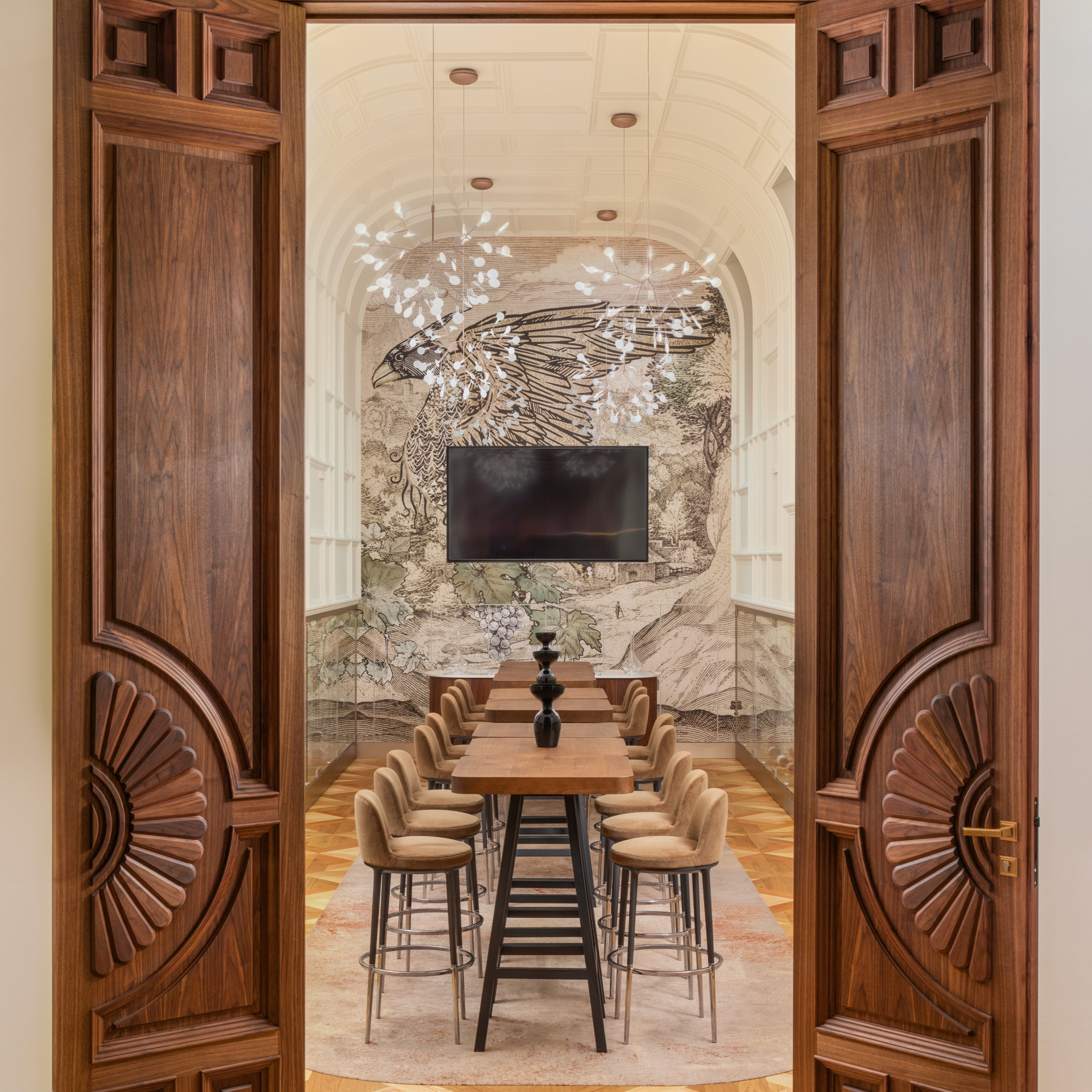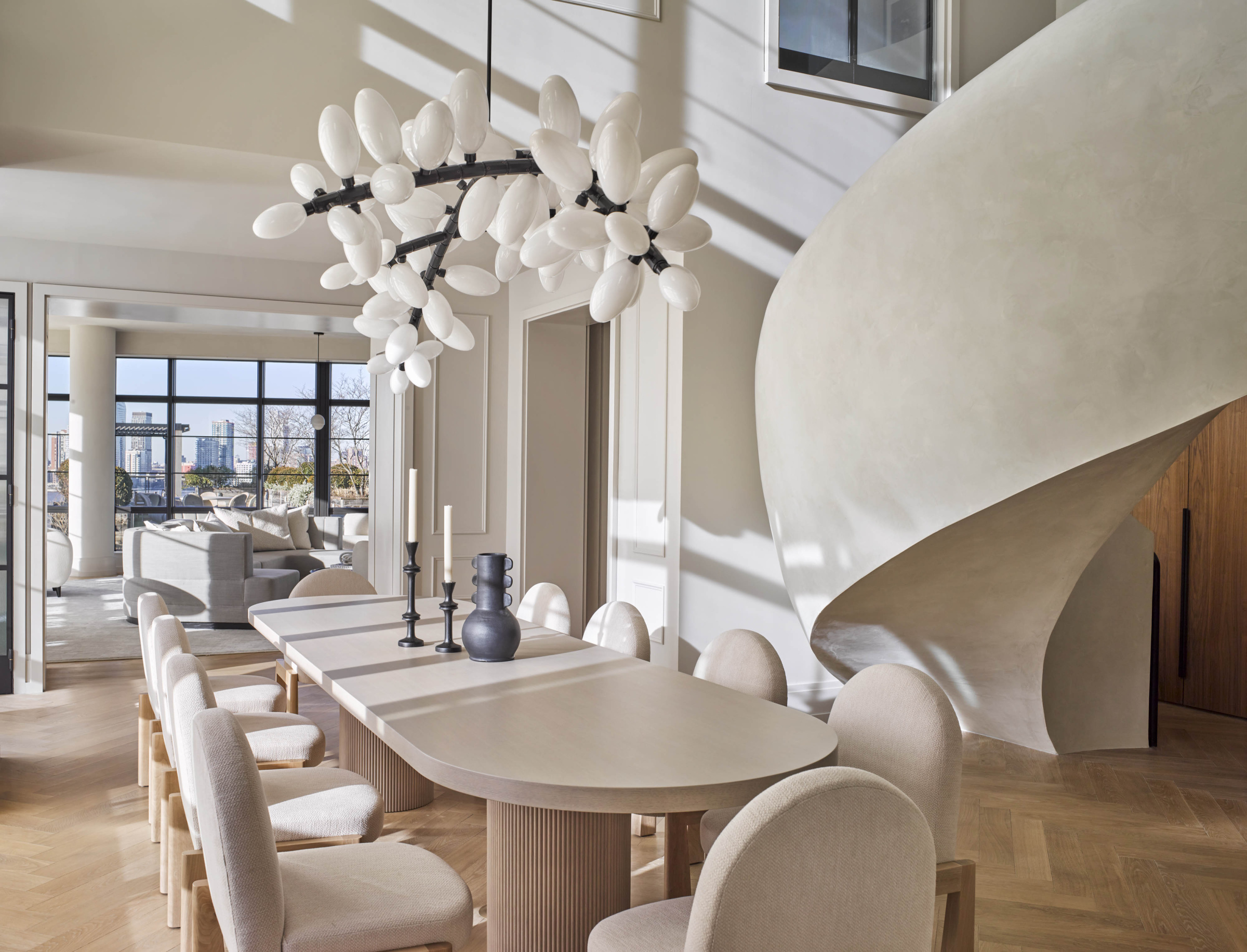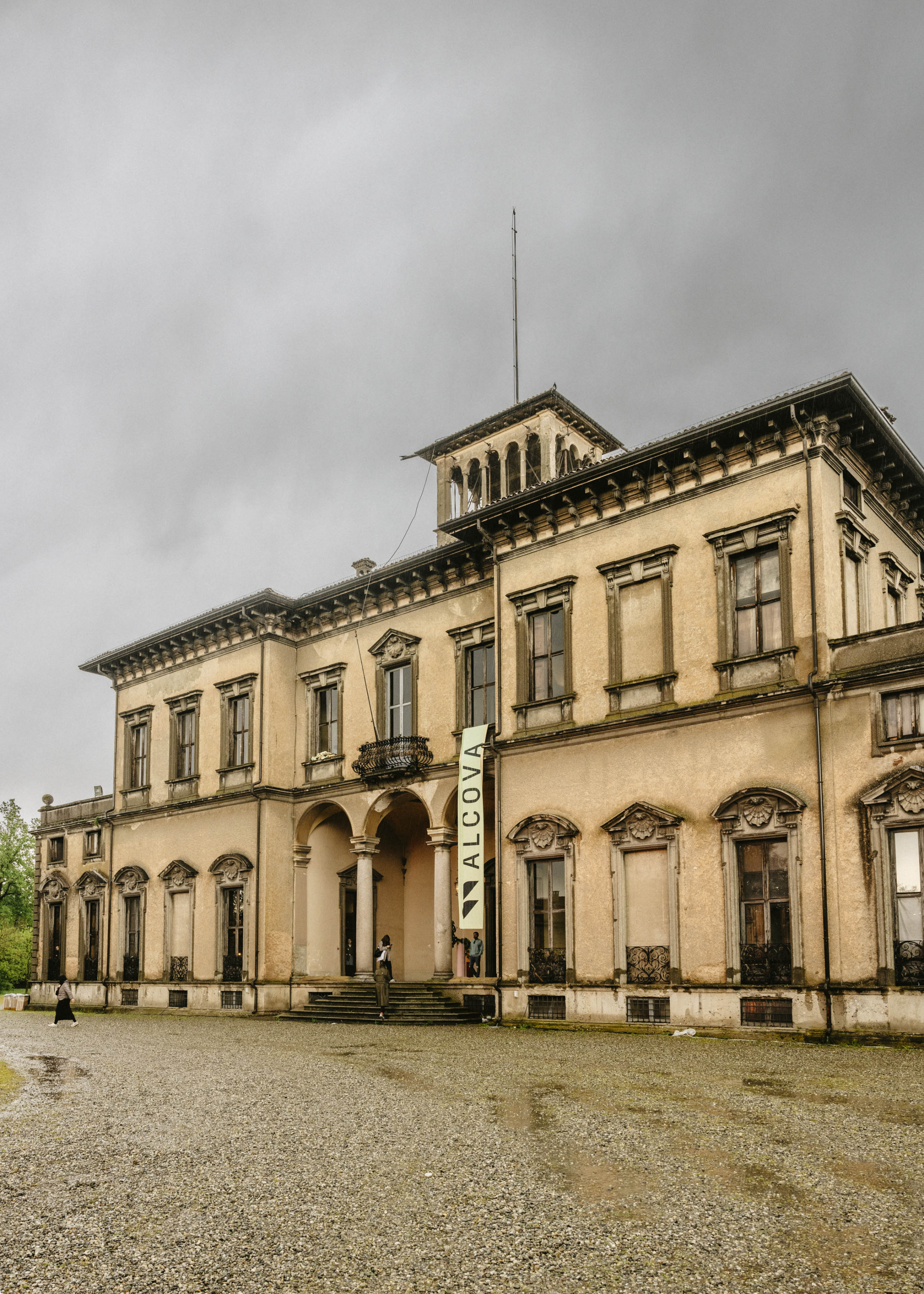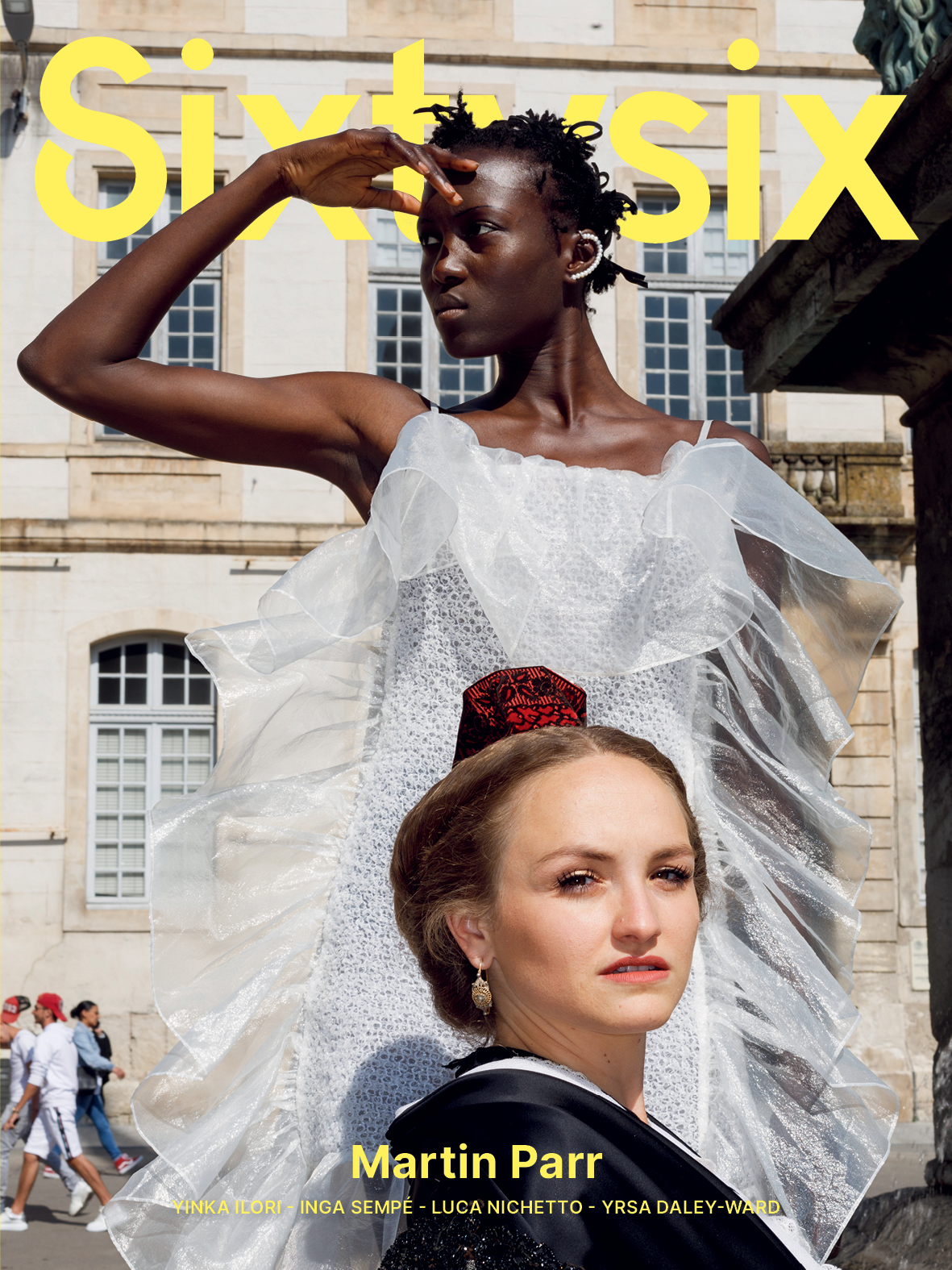Hungary is a nation defined by its complex character: a deep, sometimes dark mysticism, interwoven with pride and a profound connection to its roots. This cultural essence lingers everywhere from the folkloric imagery still ingrained in Hungarian culture to the resilience of its people. According to designer Marcel Wanders, it’s a cultural landscape steeped in nostalgia. When tasked with designing the Kimpton BEM Budapest Hotel, Marcel aimed to distill this Hungarian depth into a space that speaks to both locals and international travelers.
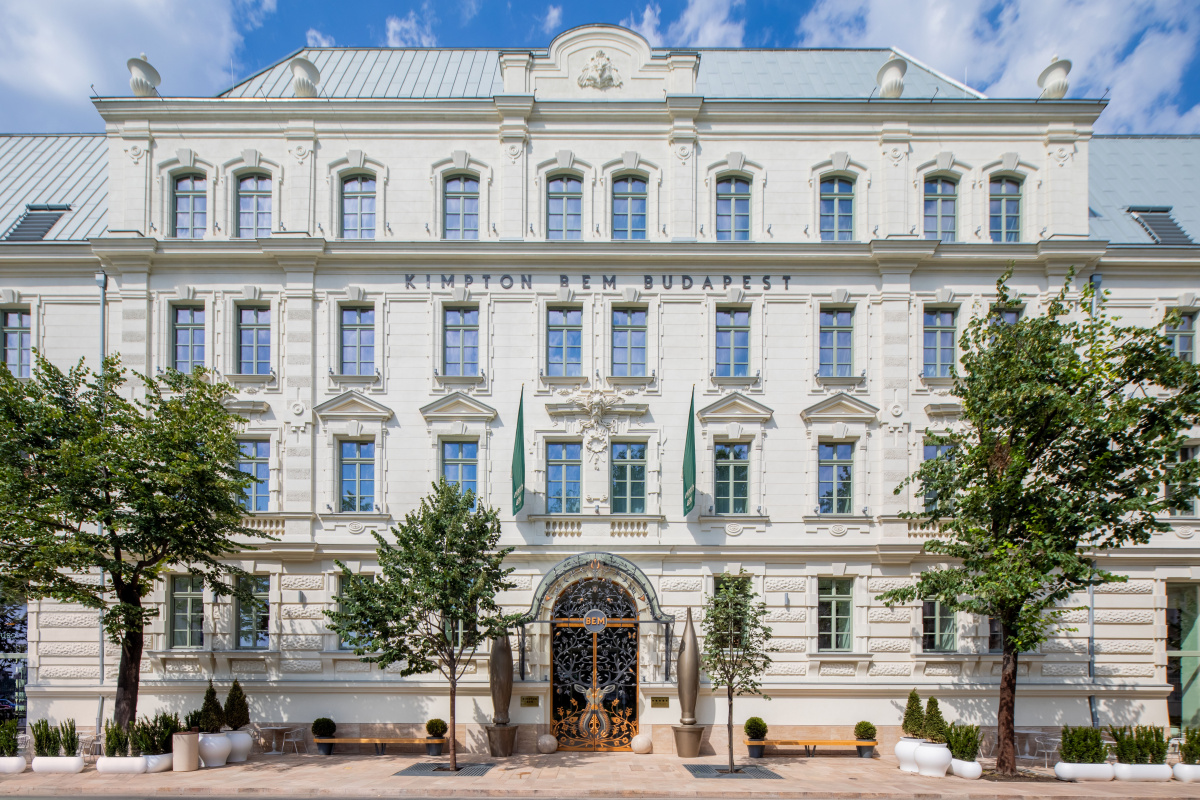
The Kimpton BEM Budapest features 127 elegantly designed guest rooms and three innovative dining concepts, each crafted to provide guests with a unique taste of Budapest’s culinary scene. Photo courtesy Kimpton BEM Budapest
“We’ve designed hotels for places around the world—the people that visit them are probably not native to Hungary,” Marcel says. “With this project, we wanted them to truly wake up in Hungary and Budapest, not somewhere else; to touch that fiber of a nation and culture.” Marcel and his team visited local libraries, read historical archives, and met with Hungarian artists to understand the city’s quiet, enduring magic.
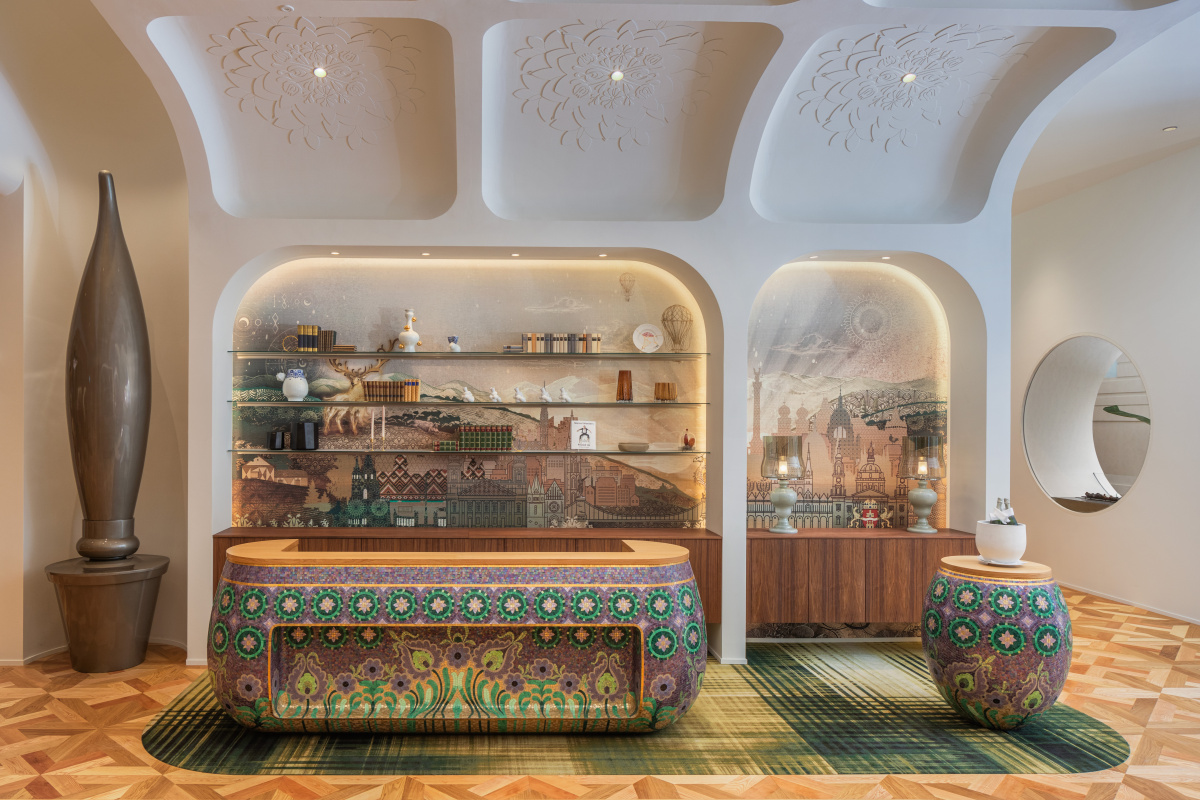
Throughout the space, intricate patterns and artistic details celebrate Hungary’s rich folklore, with motifs inspired by mythical creatures and native flora like poppies and tulips (above). The Golden Stag, another prominent folkloric character, is visible on the wall between shelves. A topiary sculpture designed by Marcel sits to the left of the desk. Photo courtesy Kimpton BEM Budapest
“The overall concept is to touch and learn from a culture so that it is recognizable in an unseen way,” he says. “To create something that is old and familiar while, at the same time, making it international and new.”
One of the standout features of the Kimpton BEM Budapest is the ornate ceramic desk situated in the lobby—a piece that is both beautiful and functional. “It’s fantastic that they were willing to create it,” Marcel says. “To draw it is one thing, but to actually make these things is something else. I was really surprised and truly excited about it.”
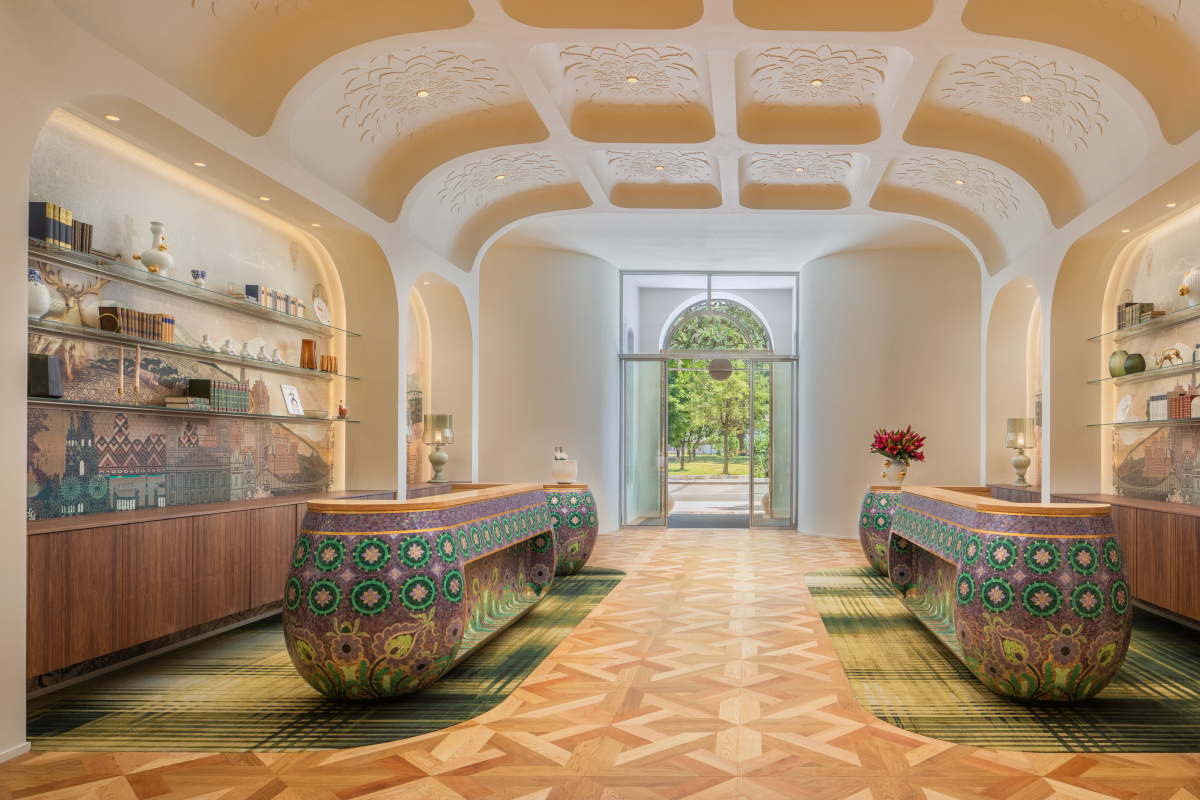
The desk’s green and purple mosaics depict motifs found within Hungarian folklore, subtly grounding the hotel in tradition. Photo courtesy Kimpton BEM Budapest
The desk’s green and purple mosaics depict motifs found within Hungarian folklore, subtly grounding the hotel in tradition. The Golden Stag, another prominent folkloric character, is visible on the wall between shelves. A topiary sculpture designed by Marcel sits to the left of the desk.
The Turul Room also provides a warm and inviting space for private dining and meetings. The Turul, a mythological bird of prey in Hungarian tradition, appears boldly on the room’s center wall designed by Marcel alongside the room’s other wallcoverings.
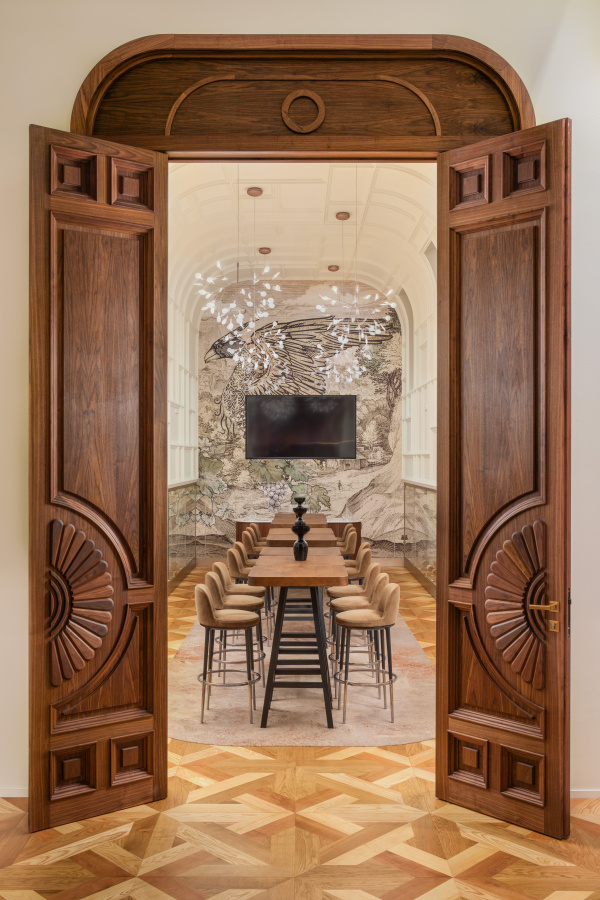
The Turul Room provides a warm and inviting space for private dining and meetings. The Turul, a mythological bird of prey in Hungarian tradition, appears boldly on the room’s center wall, designed by Marcel alongside the room’s other wallcoverings. Photo courtesy Kimpton BEM Budapest
“When you open the door you enter a new place,” Marcel says. “I love that there’s an endless number of photos you can take in the spaces we create, because everything has its own conversation. Each photo would look very different without boring anyone.”
Marcel also invited local Hungarian craftsman to bring his wooden door and detailed floor designs to life. “It’s important to create something that belongs somewhere,” he says. “If you make a chair it can land anywhere, but interiors don’t have feet—if you make a hotel, you know exactly where it lands.”
The hotel’s Agos Restaurant features a mega-chandelier created by Marcel. The fixture reimagines a classic chandelier by assembling multiple elements into a singular piece. “It has the grandness of a chandelier—but it’s built from a series of separate elements,” he says. “We build them as a complexity of existing lamps. Instead of just making a big chandelier for one situation, it’s unique. It has this grandeur, but it’s really like a collection of lamps.”
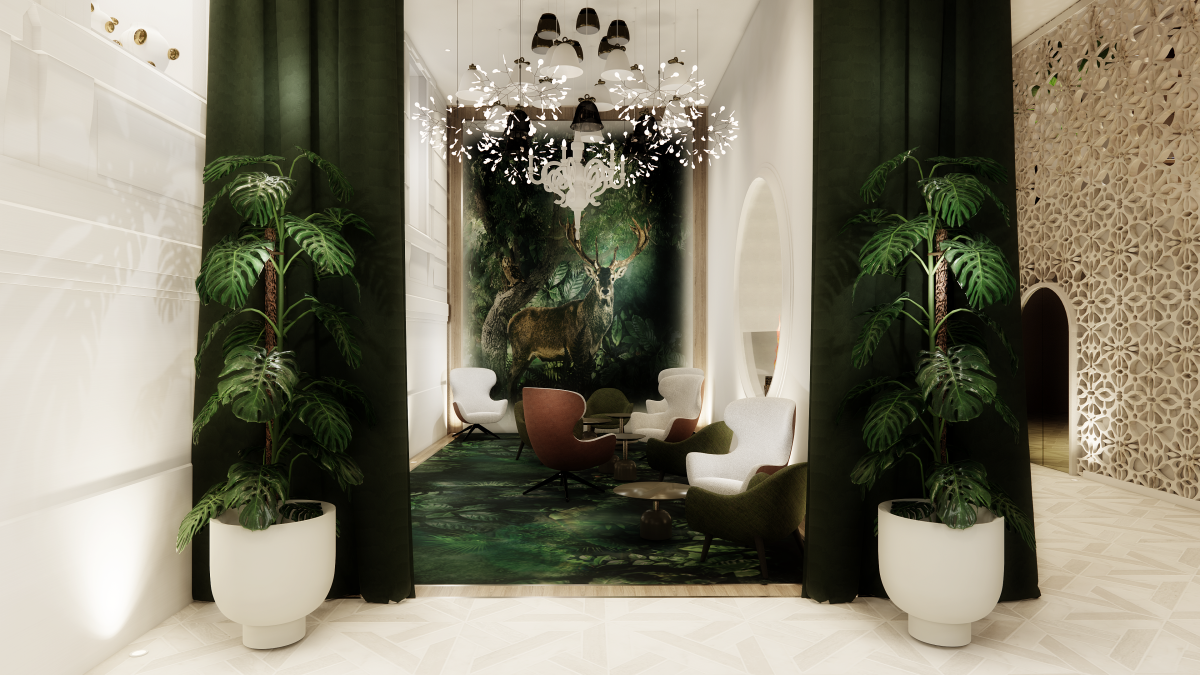
The hotel’s Agos Restaurant features a mega-chandelier created by Marcel. The fixture reimagines a classic chandelier by assembling multiple elements into a single fixture. More folkloric creatures within the space, like the Golden Stag pictured above, hold deep significance for the Hungarian people. Photo courtesy Kimpton BEM Budapest
More folkloric creatures within the space, like the Golden Stag pictured above, hold deep significance for the Hungarian people. Marcel says the stag acts as a guardian of the Magyar people, who originally hailed from the Ural Mountains and migrated across continents over centuries.
“They’ve been migrating for hundreds of years,” Marcel said. “They were even held captive by the Turks for 100 years. But in the end, they found their way, and these protectors have always been with them. It’s hard to imagine, but they still have a connection to them. It’s wonderful to make them come alive in these spaces.”
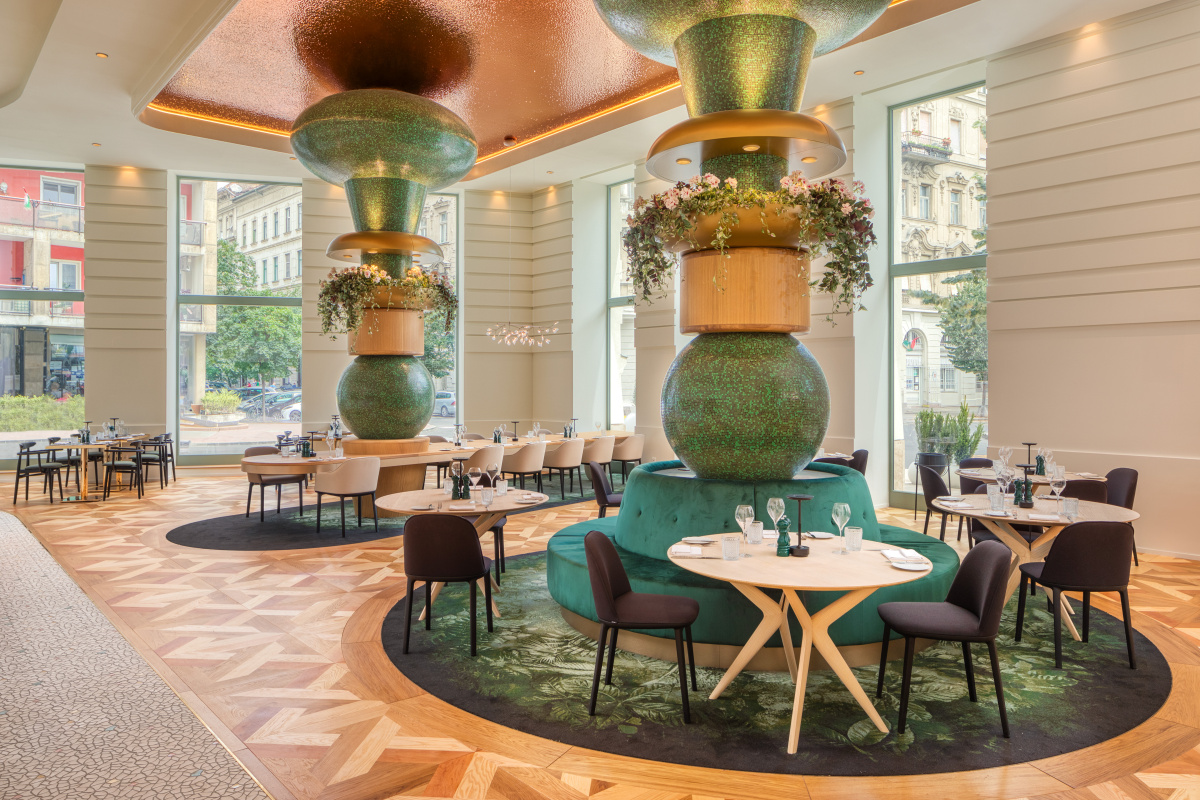
“I love that there’s an endless number of photos you can take in the spaces we create, because everything has its own conversation. Each photo would look very different without boring anyone,” Marcel says. Photo courtesy Kimpton BEM Budapest
Stepping outside, the hotel’s courtyard feels like an enchanted park—a place designed for leisure, wandering, and endless observation. Marcel says there’s always something new to see and recognize from each balcony. “In a way it’s like a Japanese garden, but in the opposite sense.”
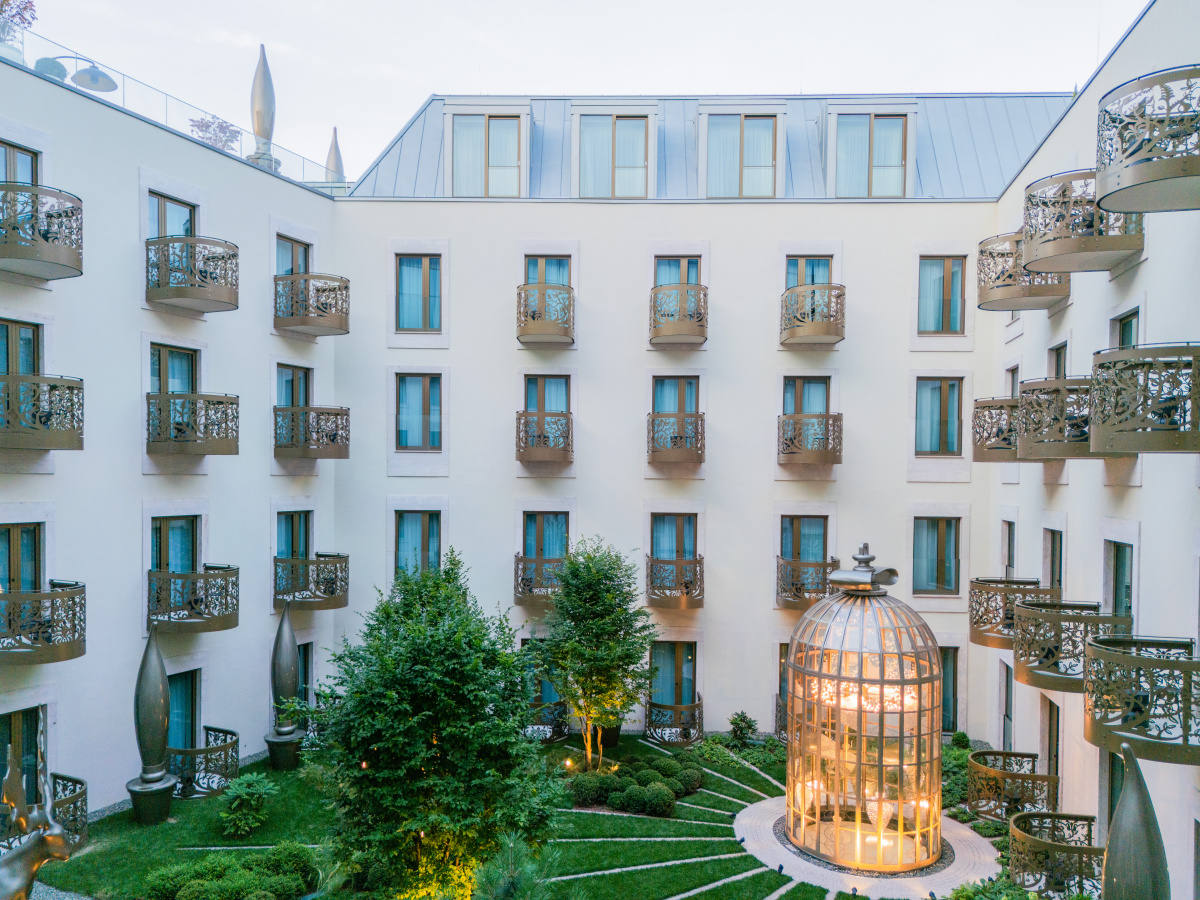
Stepping outside, the hotel’s courtyard feels like an enchanted park—a place designed for leisure, wandering, and endless observation. From each balcony, Marcel says there’s always something new to see and recognize. “In a way it’s like a Japanese garden, but in the opposite sense,” Marcel says. Photo courtesy Kimpton BEM Budapest
The hotel is also steeped in its own sense of history. Some areas feel as though they’ve existed forever, though everything is freshly reimagined. Marcel infused more subtle nods to the past through Art Deco-inspired details, evoking memories of the building’s origins.
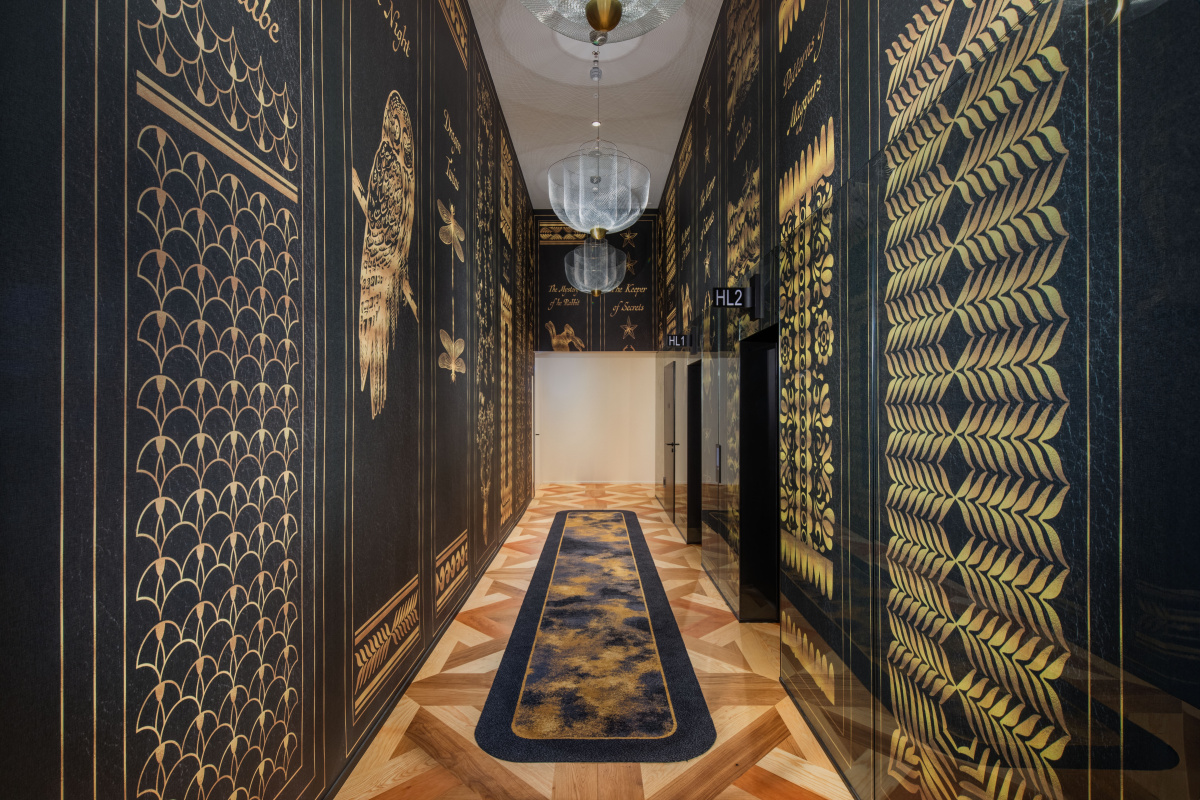
Through Art Deco-inspired details, Marcel infused more subtle nods to the past and evoking memories of the building’s origins. Photo courtesy Kimpton BEM Budapest
The Kimpton BEM’s early 20th-century structure has deep roots in Hungary’s complex history, according to Marcel. As the decades passed the building has witnessed wars and transformations, shifting hands and purposes.
“In the end this design is part of the storytelling we do,” Marcel says. “I like that there are areas where we over-decorate and other areas where we under-decorate. There’s always this feeling that when you go through a door you enter a space that has its own story, its own mesmerizing effect, its own order.”
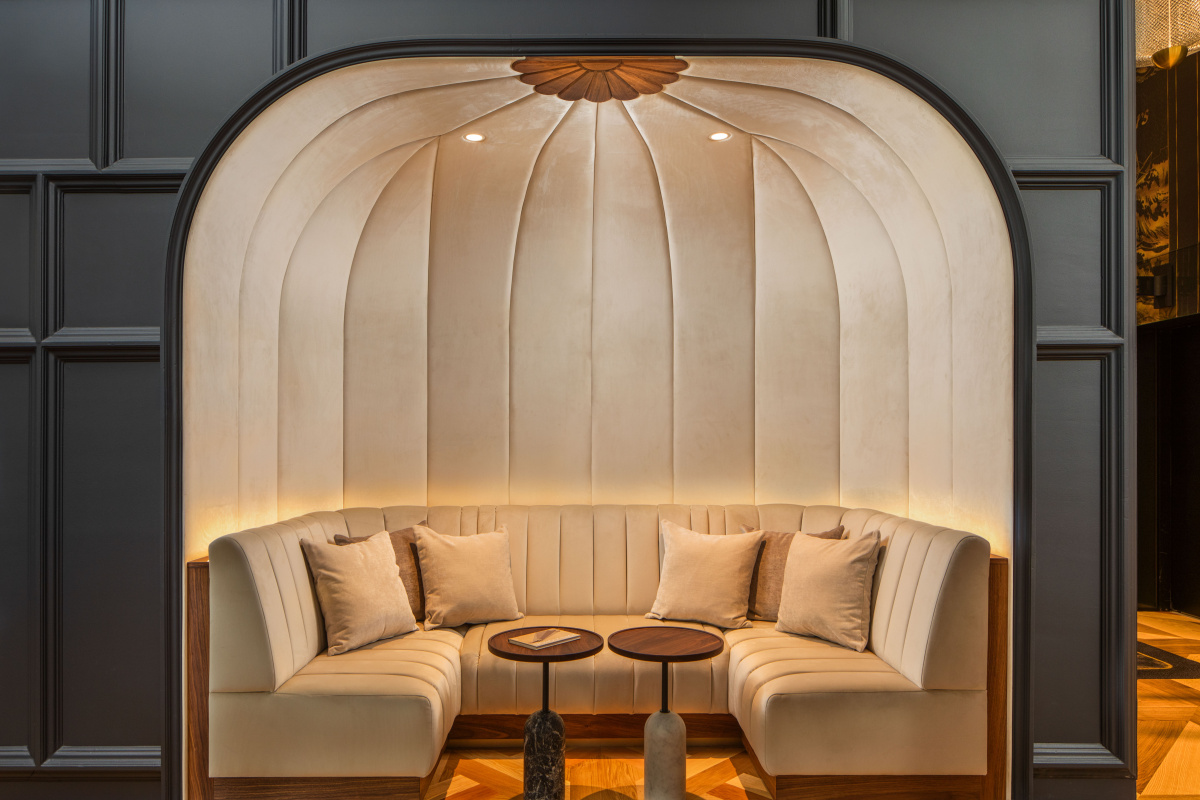
“I like that there are areas where we over-decorate and other areas where we under-decorate,” Marcel says. “There’s always this feeling that when you go through a door you enter a space that has its own story, its own mesmerizing effect, its own order.” Photo courtesy Kimpton BEM Budapest
The low ceilings in the hotel’s mezzanine and meeting room presented unique architectural challenges.
“We really wanted to find a good use for this space,” he says. “It’s an in-between, imaginative type of place. Instead of keeping it as large as possible we made the spaces smaller. It worked out well because when all the spaces are small the height becomes less relevant, and it became fantastic for meeting spaces and similar uses. There’s also this ‘art gallery’ feeling to it.”
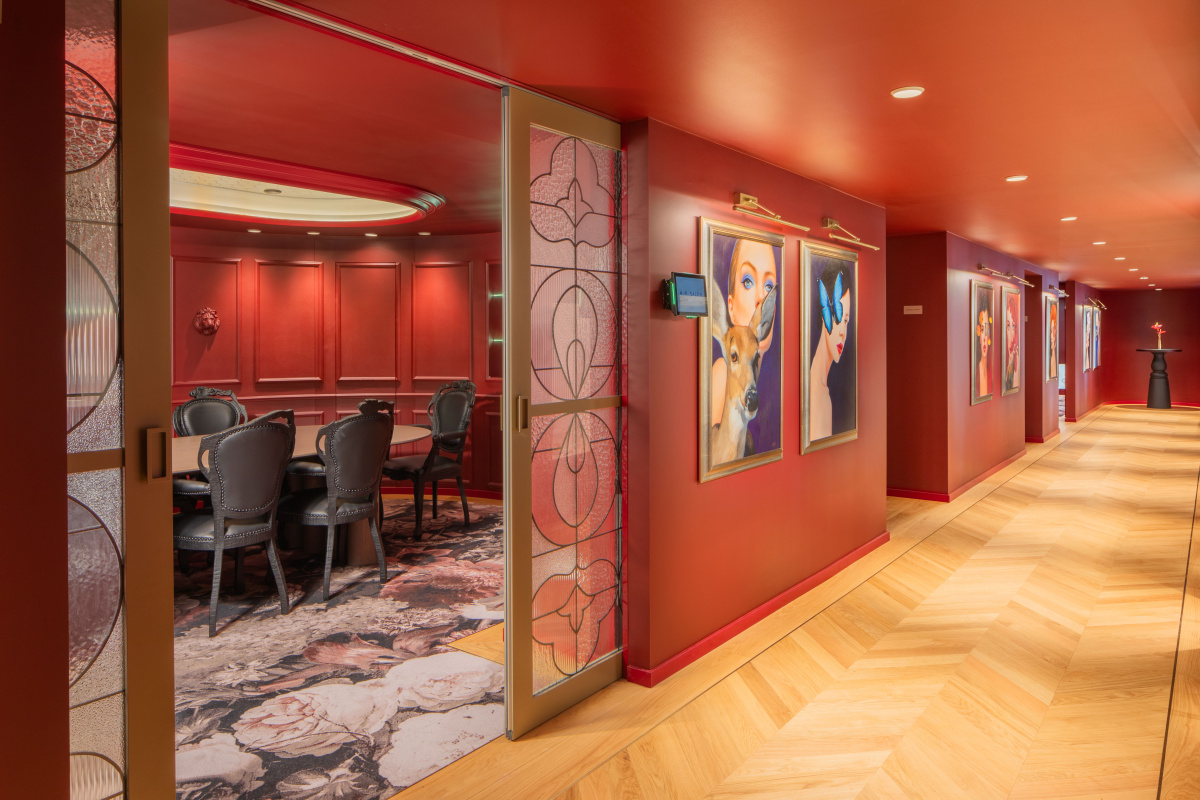
“We really wanted to find a good use for this space,” Marcel says of the hotel’s mezzanine and meeting room. “It’s an in-between, imaginative type of place. Instead of keeping it as large as possible we made the spaces smaller. It worked out well because when all the spaces are small the height becomes less relevant, and it became fantastic for meeting spaces and similar uses. There’s also this ‘art gallery’ feeling to it.” Photo courtesy Kimpton BEM Budapest
The hotel’s room styles also add an element of choice for guests: will they explore a new room on their next visit, or return to a familiar favorite?
Each room offers a thoughtful variation on color, texture, and material. “There’s a clear sense of individual identity in each space,” says Marcel. “You’ll remember exactly which room you stayed in.”
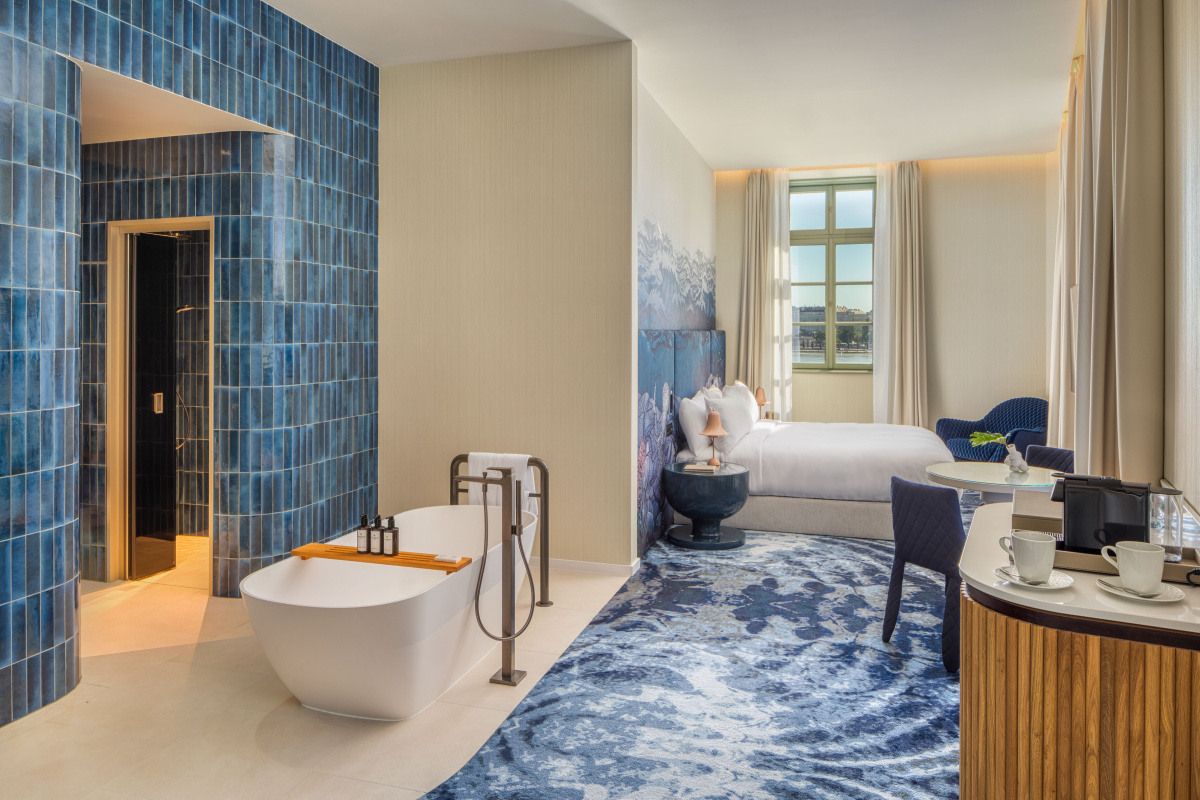
The hotel’s distinct room styles also add an element of choice for guests: will they explore a new room on their next visit, or return to a familiar favorite? Photo courtesy Kimpton BEM Budapest
Each room’s color palette goes beyond the “happy, simple” hues often seen in modern decor, according to Marcel. The Kimpton BEM is layered, rich, and refined—a palette that feels intentionally mature, grounded, and a bit more sophisticated.
“It was not an easy design to bring to life,” he says. “The hotel did an amazing job in realizing my vision.”
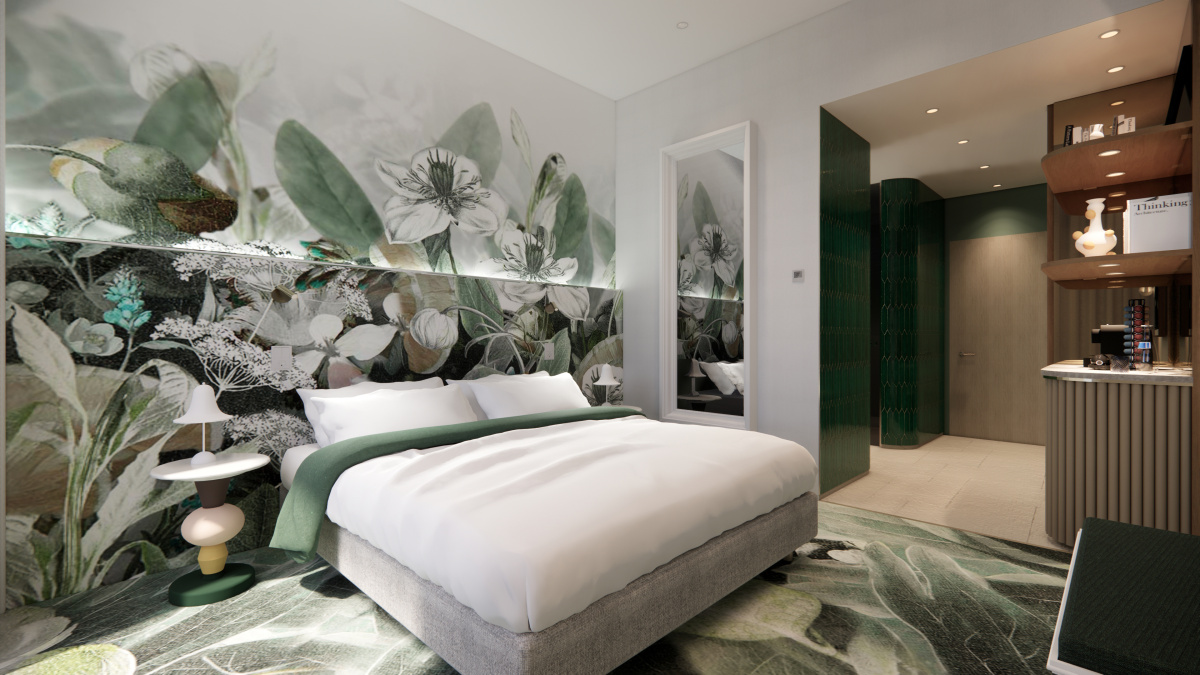
Each of the Kimpton’s rooms offer a thoughtful variation on color, texture, and material. “There’s a clear sense of individual identity in each space,” says Marcel. “When you stay here, you’ll remember exactly which room you stayed in.” Photo courtesy Kimpton BEM Budapest
When it came to the penthouse suite, Marcel deliberately opted for a “grander” design full of celestial ambiance. “We really wanted to give this space a different vibe,” he said. “Since it’s located at highest point of the hotel we thought, ‘Why not aim for the stars?’ It’s kind of cool. There’s a bit of an alien presence in there.”
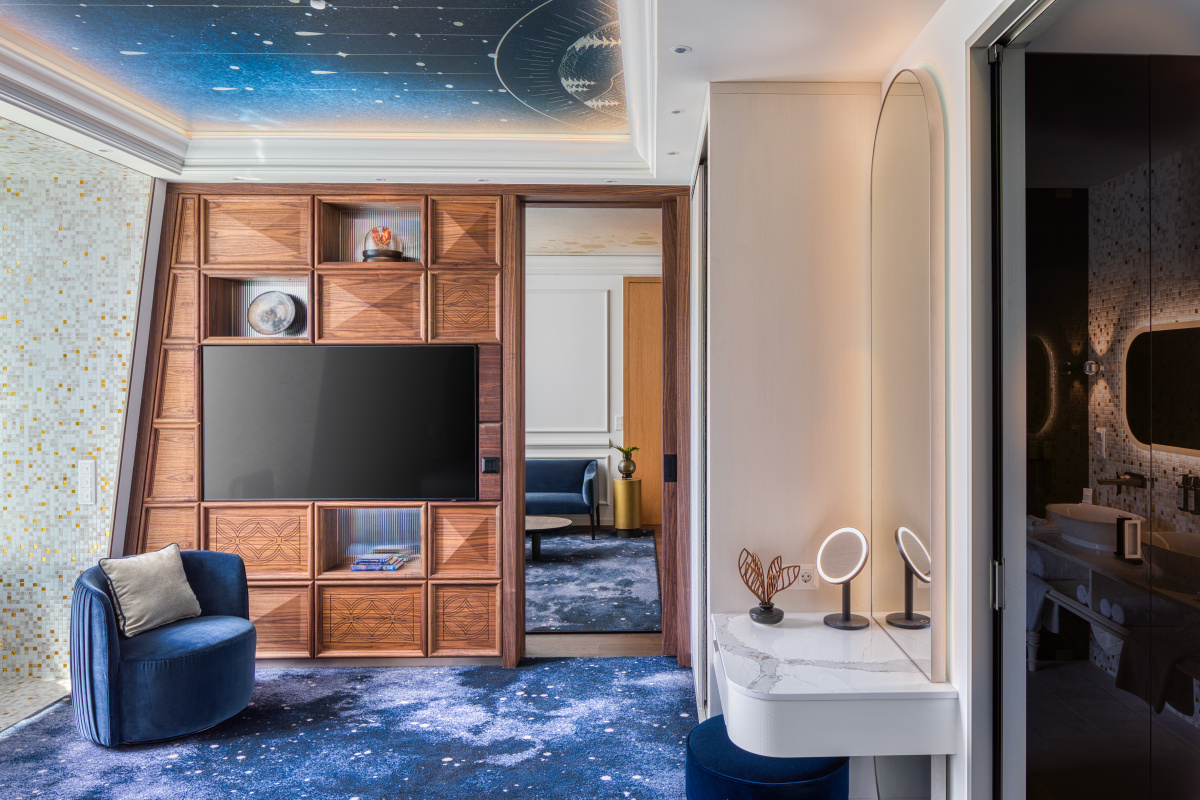
With the penthouse suite, Marcel deliberately opted for a “grander” design full of celestial ambiance. “We really wanted to give this space a different vibe,” he said. “Since it’s located at highest point of the hotel we thought, ‘Why not aim for the stars?’ It’s kind of cool. There’s a bit of an alien presence in there.” Photo courtesy Kimpton BEM Budapest
“It’s a complex thing, this hotel business,” Marcel says. “It’s not difficult to create a hotel; the challenge lies in projecting the kind of people you want to attract. Ultimately, you want to draw in the right crowd.
“There are a lot of people who will never stay in this hotel, and I think that’s what we want. The whole point of the interior is that not everyone should like it, because we want to attract like-minded people. With this hotel we are kind of “selling” your neighbors. We want open-minded people, but at the end of the day, we want to meet people who are like us.”
